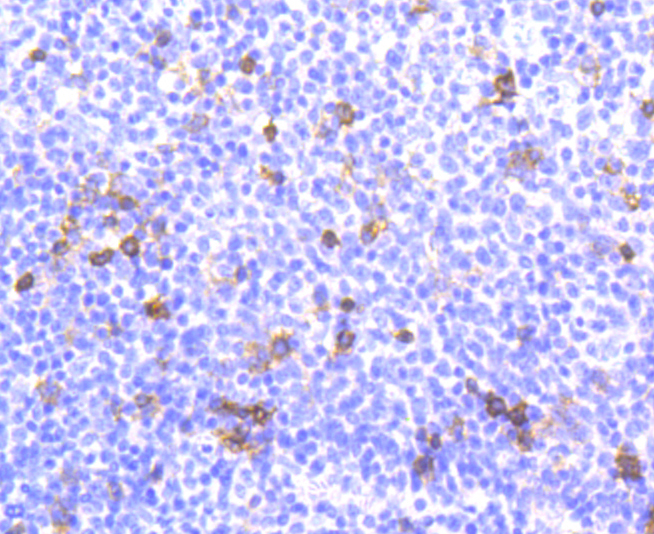Product Detail
Product NameIntegrin alpha E Rabbit mAb
Clone No.SN62-06
Host SpeciesRecombinant Rabbit
Clonality Monoclonal
PurificationProA affinity purified
ApplicationsIHC
Species ReactivityHu
Immunogen Descrecombinant protein
ConjugateUnconjugated
Other NamesA530055J10 antibody alpha-E1 antibody alpha-M290 antibody aM290 antibody Antigen CD103 antibody CD 103 antibody CD103 antibody CD103 antigen antibody HML 1 antigen antibody HML-1 antigen antibody HML1 antigen antibody Human mucosal lymphocyte antigen 1 antibody Human mucosal lymphocyte antigen 1, alpha subunit antibody Huminae antibody Integrin alpha E heavy chain antibody Integrin alpha E light chain antibody Integrin alpha E, epithelial-associated antibody Integrin alpha E1 antibody Integrin alpha IEL antibody Integrin alpha M290 antibody Integrin alpha-E heavy chain antibody Integrin alpha-IEL antibody Integrin, alpha E (antigen CD103, human mucosal lymphocyte antigen 1; alpha polypeptide) antibody Integrin, alpha E antibody ITAE_HUMAN antibody Itgae antibody MGC141996 antibody MGC183601 antibody Mucosal lymphocyte 1 antigen antibody Mucosal lymphocyte antigen 1 antibody
Accession NoSwiss-Prot#:P38570
Uniprot
P38570
Gene ID
3682;
Formulation1*TBS (pH7.4), 1%BSA, 40%Glycerol. Preservative: 0.05% Sodium Azide.
StorageStore at -20˚C
Application Details
IHC: 1:50-1:200
Immunohistochemical analysis of paraffin-embedded human tonsil tissue using anti-Integrin alpha E antibody. Counter stained with hematoxylin.
Integrins are heterodimers composed of noncovalently associated transmembrane a and b subunits. The 16 a and 8 b subunits heterodimerize to produce more than 20 different receptors. Most integrin receptors bind ligands that are components of the extracellular matrix, including Fibronectin, Collagen and Vitronectin. Certain integrins can also bind to soluble ligands such as Fibrinogen, or to counterreceptors on adjacent cells such as the intracellular adhesion molecules (ICAMs), leading to aggregation of cells. Ligands serve to cross-link or cluster integrins by binding to adjacent integrin receptors; both receptor clustering and ligand occupancy are necessary for the activation of integrin-mediated responses. In addition to mediating cell adhesion and cytoskeletal organization, integrins function as signaling receptors. Signals transduced by integrins play a role in many biological processes, including cell growth, differentiation, migration and apoptosis.
If you have published an article using product 49038, please notify us so that we can cite your literature.



 Yes
Yes



